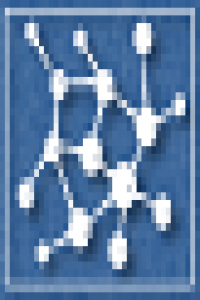The Use of Fibrin Sealant in Chiari Malformation Type-1 Surgery; Is It Effective in Preventing the Formation of CSF Fistula?
The Use of Fibrin Sealant in Chiari Malformation Type-1 Surgery; Is It Effective in Preventing the Formation of CSF Fistula?
Arnold-Chiari malformation, Type 1, fibrin sealant autografts, cerebrospinal fluid leakage,
___
- 1.D Adams CB. I’ve torn it: How to repair it. Br J Neurosurg 1995; 9:201–4
- 2.Haines SJ, Berger M. Current treatment of Chiari malformations types I and II: a survey of the pediatric section of the American association of Neurological Surgeons. Neurosurgery 1991:28(3):353-57
- 3.Nash J, Cheng JS, Meyer GA, Remler BF. Chiari type I malformation: overview of diagnosis and treatment. Wisconsin Medical Journal 2002;101(8):35-40
- 4.Nagib MG. An approach to symptomatic children (ages 4– 14 years) with Chiari type-I malformation. Pediatr Neurosurg 1994;21(1):31-35
- 5.Dyste GN, Menezes AH. Presentation and management of pediatric Chiari malformations without myelodysplasia. Neurosurgery 1998;23(5):589-97
- 6. Krieger MD, McComb JG, Levy ML. Toward a simpler surgical management of Chiari I malformation in pediatric population. Pediatr Neurosurg 1999;30(3);113-21.
- 7.Zerah M. Syringomyelia in children. Neurochirurgie 1999; 1(45):37-57
- 8. Lazareff JA, Valencia-Myoral P. Chiari malformation. Boletín Médico del Hospital Infantil de México 1990;47 (10):719-24
- 9. Eule Jm, Erickson MA, O’Brien MF, Handler M. Chiari I malformation associated with syringomyelia and scoliosis: a twenty-year review of surgical and nonsurgical treatment in a pediatric population. Spine 2002;27(13): 1451-55
- 10.Yundt KD, Park TS, Tantuwaya VS, Kaufman BA. Posterior fossa decompression without duraplasty in infants and young children for treatment of chiari malformation and achondroplasia. Pediatric Neurosurgery 1996;25(5):221– 226
- 11. Isu T, Sasaki H, Takamura H, Kobayashi N. Foramen magnum decompression with removal of the outer layer of the dura as treatment for syringomyelia occurring with Chiari I malformation. Neurosurgery 1993;33(5): 844–849
- 12.Genitore L, Peretta P, Nurisso C, Macinante L, Mussa F. Chiari type I anomalies in children and adolescents: minimally invasive management in a series of 53 cases. Child's Nervous System 2000;16(10-11):707–718
- 13.Alden TD, Ojeman JG, Park TS. Surgical treatment of Chiari malformation: indications and approaches. Neurosurgical Focus;2001;11(1):E2
- 14.Hankinson T, Tubbs RS, Wellons JC. Duraplasty or not? An evidence-based review of pediatric Chiari malformation. Child's Nervous System 2011; 27(1):35–40
- 15.Sindou M, Gimbert E. Decompression for Chiari type Imalformation (with or without syringomyelia) by extreme lateral foramen magnum opening and expansile duraplasty with arachnoid preservation: comparison with other technical modalities (Literature review). Advances and Technical Standards in Neurosurgery 2009;34:85-110
- 16.Manley GT, Dillon W. Acute posterior fossa syndrome following lumbar drainage for treatment of suboccipital pseudomeningocele. Report of three cases. J Neurosurg. 2000; 92:469–74
- 17.Summary of Safety and Effectiveness Data: Dura Seal Dural Sealant System. Silver Spring: U.S. Food and Drug Administration; 2005. Administration USFaD
- 18.Cosgrove GR, Delashaw JB, Grotenhuis JA, Tew JM, Van Loveren H, Spetzler RF, et al. Safety and efficacy of a novel polyethylene glycol hydrogel sealant for watertight dural repair. J Neurosurg. 2007; 106:52–8
- 19.Than KD, Baird CJ, Olivi A. Polyethylene glycol hydrogel dural sealant may reduce incisional cerebrospinal fluid leak after posterior fossa surgery. Neurosurgery 2008 Jul;63: ONS182-6; discussion ONS186-7
- 20. Lam FC, Penumaka A, Chen CC, Fischer EG, Kasper EM. Fibrin sealant augmentation with autologous pericranium for duraplasty after suboccipital decompression in Chiari 1 patients: A case series. Surg Neurol Int. 2013; 4:6
- 21.Tonkins M, Farooqi N, Ahmed R, Sinha S, Bhattacharyya D. Closing the dura: dural hitching versus surgicel and tisseel overlay graft in craniocervical decompression for Chiari 1 malformation. Br J Neurosurg. 2017 Aug;31(4): 422-425
- 22. Langridge B, Phillips E, Choi D. Chiari Malformation Type 1: Systematic Review of Natural History and Conservative Management. World Neurosurg. 2017 Aug;104:213-219
- 23.Stevens EA, Powers AK, Sweasey TA, et al. Simplified harvest of autologous pericranium for duraplasty in Chiari malformation Type I. Technical note. J Neurosurg Spine 2009;11:80-3
- ISSN: 2149-0430
- Başlangıç: 2015
- Yayıncı: Kemal Türker ULUTAŞ
Hakan YAMAN, İsmet AKCAY, Sedat YİLDİZ
Psoriasis and Schizophrenia: An Interesting Association
N.a. Bishurul HAFİ, N.a. UVAİS
Server BOZDOGAN, Abdullah ARPACİ
Impact of Refresher Training on Knowledge Regarding Tuberculosis among Health Workers of West Bengal
A Fatal Case of Aspergillus Empyema
Results of Surgery Performed on 151 Patients of Hypospadias: Single Center Experience
Ahmet ATİCİ, Mehmet Emin CELİKKAYA, Cigdem EL, Bulent AKCORA
Treatment Response to Phototherapy in Patients with Mycosis Fungoides and Parapsoriasis
Ebru CELİK, Gokhan UCGUL, Asena Cigdem DOGRAMACİ
Pelvic Actinomycosis Associated with Intrauterine Device
Chu-hsin CHUANG, Soon-cen HUANG, Na-mi LU, Chien-ming CHAO
Ossifying Subperiosteal Hematoma of the Iliac Bone: Imaging Findings
Mehmet H ATALAR, Nisa BASPİNAR
OSE: A New Education and Treatment Program for Preschool Period
